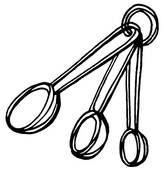

| Boiled Eggs | |
| Ingredients: |
Eggs Water |
| Directions |
Boiling eggs may sound like a simple task, but there are so many things that can go wrong that many people end up with eggs that are overcooked, undercooked, hard to peel, or have discolored (green) yolks. Here's how you do it to get good results every time. Start with a pan large enough to hold your eggs so they are in one layer with room to move around. You don't want to crowd them. This lets water move around so your eggs all cook evenly. The pan must also have a lid that fits properly. Add enough water to cover the eggs, but also have about an inch of water above them. This ensures there's enough water to absorb the heat and cook the eggs gently. If you don't have enough water, the eggs cook too fast, which causes the shells to stick and the eggs will be hard to peel. It doesn't have to be exactly one inch, but if in doubt, add more water. Put the pan on the burner and turn it up to high, but don't go anywhere or get distracted. You also don't need the lid yet. Once the water reaches a rolling boil, turn off the heat and put the lid on. Set a timer and wait 14 minutes. The heat in the water will continue to cook the eggs. While you're waiting, fill a large bowl or clean sink with ice water. When the 14 minutes is up, use a slotted spoon or similar tool to move the eggs from the pan to the ice bath. This will stop the cooking process and help the shells release from the eggs so peeling is easier. That's it! Use the eggs any way you wish. Now that you know why each step is necessary, here is a shortened version: 1. Place a loose, single layer of eggs in a pan. 2. Cover with an inch of water. 3. Boil. 4. Turn off heat, cover, and wait 14 minutes. 5. Move eggs to an ice bath. |